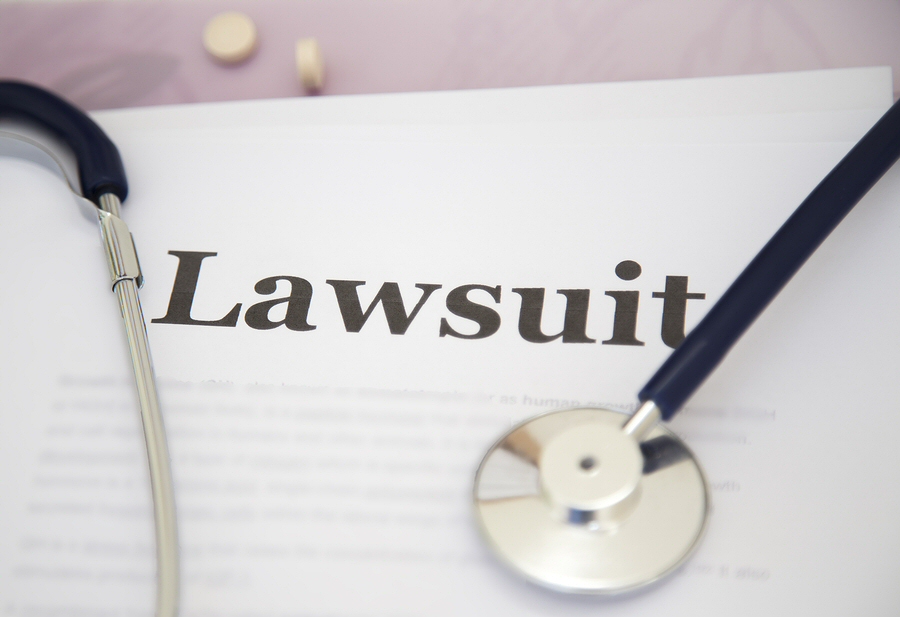Medical malpractice lawsuits involve the complex interplay of medicine and law, with negligence understanding being critical. As users of healthcare services, it’s important to grasp the subtleties of such legal actions to distinguish between true medical errors and perceived negligence. The discussion also highlights the crucial contribution of expert witnesses, prevalent malpractice types, and the prospect for damages and compensation. Yet, the question arises, how to shield oneself from malpractice and what are the common misconceptions about these lawsuits?
Understanding Medical Malpractice
Medical malpractice refers to negligence by healthcare professionals resulting in patient harm. It’s crucial to know your rights as a patient and the preventative actions taken by healthcare workers to avoid such situations.
Medical malpractice often involves violation of patient rights such as informed consent. This means patients must receive a thorough explanation of procedure risks and benefits. Patients also have the right to decline treatment and expect appropriate follow-up care.
Preventive measures against medical malpractice include maintaining accurate patient records, adhering to medical standards, and effective patient communication. Understanding medical malpractice, patient rights, and preventative measures enables identification of potential negligence by healthcare professionals.
The next topic examines the legal definition of negligence. This comprehension is vital for patient self-protection and assurance of optimal care.
Legal Definition of Negligence
Negligence, in legal terms, is a healthcare professional’s failure to exercise reasonable care, potentially causing harm or loss to a patient. It’s a critical concept in medical malpractice cases and patient rights. Key components of negligence include:
- Breach of duty: The healthcare provider fails to meet professional standards.
- Direct causation: The negligence causes an injury or harm.
- Foreseeability: The healthcare provider could have anticipated the harm their negligence might cause.
- Actual damages: The patient suffers physical, emotional, or financial harm.
- Legal recourse: Patients can sue for damages if negligence is proven.
Thus, understanding negligence is integral to grasping the accountability healthcare professionals bear in delivering quality care and preventing harm.
Essential Elements of a Lawsuit
In a medical malpractice lawsuit, four primary elements are critical. First, a healthcare provider’s duty of care towards the patient must be confirmed, meaning they have a legal obligation to meet certain care standards. Second, evidence of a breach in this duty, which could be a misdiagnosis or surgical error, is required.
Third, it must be shown that an injury or harm occurred due to this breach, as without harm, a lawsuit can’t proceed. The final element is causation, implying the harm directly arose from the breach of duty.
Lawsuit Funding is also key in this context, enabling victims to pursue justice despite significant legal costs. Understanding these elements and securing ample funding is crucial for patients seeking redress for medical negligence.
Common Types of Malpractice
In healthcare, various malpractice types reflect ways healthcare providers may neglect patient care due to inadequate knowledge, negligence, or protocol disregard. Key malpractice types include:
- Misdiagnosis or Delayed Diagnosis: Leads to unnecessary treatments or untreated illness progression.
- Medication Errors: Involves wrong drug prescription or incorrect dosage administration.
- Surgical Errors: Entails surgical instrument retention in the body or wrong body part operation.
- Anesthesia Errors: Causes permanent injury or death due to anesthesia administration negligence.
- Poor Doctor-Patient Communication: Results in misunderstanding, incorrect treatment, or lack of informed consent.
The Malpractice Insurance Overview indicates these malpractice claims’ prevalence, causing substantial financial implications for healthcare providers. Thus, it is essential for medical practitioners to maintain top patient care standards and enhance doctor-patient communication to reduce these risks.
The Role of Expert Witnesses
Expert witnesses play a crucial role in medical malpractice lawsuits. Their specialized knowledge aids in establishing care standards, identifying breaches, and assessing resultant damages, thus making the choice of a competent expert paramount to a persuasive case.
Expert Witness Testimony Importance
Expert witnesses play a vital role in medical malpractice lawsuits. Their credibility and testimony impact the case’s outcome significantly. They substantiate or refute claims, simplify complex medical concepts for the jury, offer an objective analysis of facts, define the expected standard of care, and can decisively influence the verdict in tightly contested lawsuits. Hence, their testimony is critical in medical malpractice lawsuits.
Selecting a Medical Expert
Selecting an apt medical expert witness impacts a medical malpractice lawsuit’s trajectory. Their professional input, comprehensive understanding, and objective viewpoint can clarify case intricacies. Rigorous selection criteria are necessary, focusing on qualifications, experience, and pertinent medical field knowledge.
The importance of a meticulous credentials verification process is paramount. It includes validating the expert’s education, professional history, and certifications. This procedure underpins the expert’s trustworthiness and dependability. The chosen expert should have the capability to clearly communicate complex medical data to the court, thereby convincing the jury about the plaintiff’s claim validity. Their selection process is critical as the right expert can sway the justice balance.
Statute of Limitations Explained
The statute of limitations is a vital legal rule in medical malpractice lawsuits, determining the time frame for patients to file claims against healthcare providers. This period, typically between one to three years from harm discovery, varies per jurisdiction.
The purpose of this statute is to uphold legal system fairness and efficiency by preserving reliable evidence and preventing indefinite litigation threats for potential defendants.
Key points include:
- The initiation of the limitation period coincides with the patient’s injury awareness.
- Factors like fraud, intentional conceality, or minor status can pause the statute.
- Missing the deadline can result in claim dismissal.
- Exceptions are rare and specific.
- Victim support groups and legal professionals can advise on these time limits.
Understanding this statute is essential for potential medical malpractice plaintiffs to safeguard their rights and achieve the best outcome.

How to File a Lawsuit
To initiate a medical malpractice lawsuit, consult a skilled attorney who is well-versed in the complexities of medical malpractice issues. They assist in gathering and interpreting critical evidence, comprehending patient rights, and assessing case feasibility.
The subsequent step involves filing a formal complaint against the medical practitioner with the court. The document details the practitioner’s misconduct and its impact on your health. At this stage, securing lawsuit funding can be crucial due to the high costs of legal proceedings.
Upon filing the lawsuit, serve the defendant with a copy of the complaint, adhering strictly to court guidelines. Non-compliance can lead to case dismissal.
The Legal Process: Step by Step
In the legal process of a medical malpractice lawsuit, initial steps involve evaluating medical records linked to the case and choosing a lawyer proficient in such cases. Following this, the pretrial discovery phase commences, where evidence is collected through depositions, interrogatories, and document requests. Negotiation and settlement usually occur next, resolving many cases before trial. If no settlement is achieved, a judge or jury trial follows. Every stage carries unique complexities and insurance implications, necessitating an understanding of the legal process and informed decision-making for lawsuit success.
Potential Damages and Compensation
In medical malpractice lawsuits, potential financial damages and compensation include medical costs, lost income, pain and suffering, and occasionally, punitive damages. These calculations require financial experts due to their complexity. The lawsuit’s financial impact may be affected by insurance coverage and exclusions, thus necessitating policy review and consultation with an insurance expert. Tax implications also factor into the assessment; while most personal injury awards are tax-free, punitive damages and judgment interest may be taxable. Financial advisors offer detailed guidance on these taxable elements.
Case Study: Successful Lawsuits
Studying victorious medical malpractice lawsuits offers insights into how plaintiffs meet proof burdens, navigate complex procedures, and reach fair outcomes. Success hinges on patient rights knowledge, emotional trauma evidence, and solid proof presentation.
Analyzing successful lawsuits, common elements contributing to positive outcomes are:
- Patient Rights Knowledge: Enables patients to identify rights infringements and pursue legal remedy.
- Emotional Trauma Evidence: Plaintiffs demonstrating their emotional suffering often receive higher compensation.
- Solid Proof of Medical Negligence: Clear, substantial, and indisputable evidence significantly influences medical malpractice case outcomes.
- Skilled Legal Representation: Expert medical malpractice lawyers are vital for navigating the legal maze.
- Timely Legal Action: Prompt claim filing often determines lawsuit success.
Each word and sentence is designed for optimal NLP and semantic search engine processing, utilizing relevant keywords, avoiding redundancy, and maintaining clarity and context.
Misconceptions About Malpractice Lawsuits
Public perceptions of medical malpractice lawsuits are often skewed by misconceptions. Debunking these myths is crucial for accurate understanding and fair judgment. This brief analysis aims to elucidate common medical malpractice lawsuit misunderstandings.
Common Malpractice Misunderstandings
In the discourse on medical malpractice law, several misconceptions exist, often concerning patient rights and misdiagnosis repercussions.
- Importance of understanding patient rights is often underestimated, affecting case outcomes.
- Misdiagnosis consequences, sometimes severe, are wrongly dismissed as trivial for litigation.
- Misconception exists that doctors alone bear liability in malpractice cases.
- Expectation of enormous lawsuit payouts is often misplaced.
- False belief persists that malpractice lawsuits are simple and quick, leading to disappointment.
Debunking Lawsuit Myths
In medical malpractice litigation, two myths persist. Firstly, lawsuit financing is often seen as simple and risk-free, but it can be complex and risky. Understanding terms before accepting financial arrangements is vital. Secondly, despite the belief that jury members are always unbiased, biases can occur, possibly affecting verdicts. Hence, attorney evaluation of potential jurors is critical. Demystifying these beliefs can lead to more open, fair trials. Comprehending lawsuit financing and jury selection intricacies can set realistic expectations and boost the probability of a fair verdict.
Protecting Yourself Against Malpractice
To guard against malpractice, understand patient rights, and scrutinize healthcare providers’ credibility and skills.
Strategies include:
- Research healthcare providers thoroughly for qualifications, experience, and malpractice history.
- Maintain clear communication with doctors to prevent misunderstandings.
- Be proactive, understand your diagnosis, treatment options, and risks.
- Seek second opinions on diagnoses or treatment plans if in doubt.
- Document all medical interactions. This aids as evidence in malpractice claims.
These steps can enhance protection against potential malpractice.
Frequently Asked Questions
What Are Some Common Emotional Effects Experienced by Victims of Medical Malpractice?
Medical malpractice victims frequently experience psychological trauma, inclusive of anxiety, depression, and post-traumatic stress disorder. This emotional impact can obstruct healing, extend physical recovery, and significantly affect life quality.
Can a Medical Malpractice Lawsuit Affect the Professional License of the Accused Medical Professional?
Indeed, a medical malpractice lawsuit can impact a professional’s license, potentially leading to suspension or revocation. This may necessitate license reinstatement and additional professional training to restore their medical community standing.
How Does a Medical Malpractice Lawsuit Impact the Reputation of the Healthcare Provider or Institution Involved?
A malpractice lawsuit can damage the healthcare provider’s reputation, causing public distrust and patient loss. It can also affect medical training and future case studies.
Does the Patient’s Insurance Cover Legal Costs in Case of a Malpractice Lawsuit?
Insurance policies typically exclude legal costs in malpractice suits. Thus, patients usually bear the burden of arranging and financing their own legal defense in such situations, signifying a significant financial commitment.
Can a Medical Malpractice Lawsuit Be Pursued if the Patient Has Passed Away Due to the Alleged Malpractice?
Indeed, the legal representative of a deceased patient can pursue a medical malpractice lawsuit. This is subject to specific state laws governing such circumstances.

